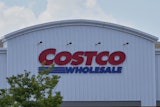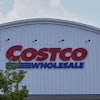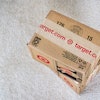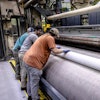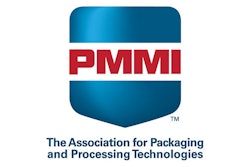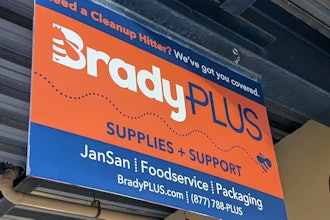From product quality to output speed, uptime and design, sealing affects vital aspects of brand image and, ultimately, business success. However, the outcome depends on just how well the sealing technology is suited to the individual product, environment, production parameters and materials. The importance of the sealing process as part of the overall production process is generally rather underestimated.
In this Q&A, Norbert Höchst, Senior Consultant for Packaging Materials at Bosch Packaging Technology, provides an expert view on just what it is that makes sealing so crucial and how manufacturers can ensure they get the best solution for their product.
Q: Why is sealing so important in packaging?
Sealing technology is of vital importance for manufacturers and can make or break the success of a production process. With the right method, sealing not only ensures product safety and quality — it also has the potential to improve presentation and usability, resulting in a more appealing brand. On the flip side, inadequate seals can translate into poor product quality that could result in both financial and brand damage. In operational terms, sealing is often the bottleneck, negatively affecting efficiency and speed. Therefore, we are constantly working on new ideas to take efficiency and quality to the next level. We have a wealth of experience in this field and consult our customers to determine the best materials and technologies to suit their individual product and packaging style.
Q: What are the main requests and requirements from manufacturers with regards to sealing?
Businesses are under constant pressure to minimize costs while achieving the best sealing quality possible. Therefore, manufacturers’ demands really come down to two main factors: quality and efficiency. This is why we are often asked for solutions that allow the use of cost-efficient films while also guaranteeing tight seals and long-lasting packs — all as part of a robust packaging process that reduces downtime and waste, and provides optimal product protection.
Q: What are the main types of sealing technologies available?
The key technologies available are heat, cold and ultrasonic sealing.
Q: Can you briefly explain how the sealing process works?
In order to create a flow-wrapped package, the film is formed into a tube by a length seal. Then, two cross seals fully enclose the product, making the package tight. It’s common knowledge that sealing is just a combination of temperature, pressure and time. Heat sealing fuses the seams under pressure at working temperatures of up to 250°C, while in cold sealing only pressure is applied to create a seal. Time and temperature are not that essential here. In the case of ultrasonic sealing, the film is mechanically cold loaded in the ultrasonic frequency range and thereby melted. Each of these sealing technologies requires appropriate films with the right properties to produce the desired result.
These sealing methods are implemented in practice using different mechanical concepts:
In the case of the rotating sealing technology, the sealing is produced by the pressure of the mutually counteracted sealing jaws. The purely rotating seal movement is the mechanically fastest technology with the drawback of a very short sealing time.
When it comes to the most critical factors in the flow-wrapping process, however, time is literally of the essence. This is especially true for the sealing of cross seams in heat and ultrasonic sealing. Therefore, Bosch offers a number of different sealing movements; extending the sealing time to a maximum without slowing down the packaging line. In long-dwell sealing applications, the sealing jaws follow an eccentric motion, allowing sealing times of up to 40 times longer than rotary sealing, producing hermetic packages. However, this sealing method has a mechanical limitation of 40 meters of film per minute. Amplified heat sealing (AHS) is the latest Bosch innovation in sealing technology. The rotary sealing unit moves along with the film creating a sealing time that’s four times longer than the sealing time of a static rotary station. With an achievable film speed of 70 meters per minute, this technology is positioned right between rotary and long dwell sealing, combining the advantages of higher sealing integrity at higher speeds.
Q: What are the main challenges for manufacturers when it comes to the sealing process?
Manufacturers are faced with the challenge of having to juggle product quality with speed, efficiency and cost. No two projects are the same as a multitude of variables can affect the process — including product consistency, overall speed/speed variations within the process, packaging style, industry regulations, climate, film type(s) and shelf life. In addition, waste has to be kept to a minimum. With all of these parameters to take into consideration, applying the right technology for a specific product and production process is vital.
Q: What are the main differences between the technologies when it comes to different types of applications?
Typically, chocolate products are heat-sensitive and manufactures require high line speeds. Therefore, they are wrapped in films suitable for cold seals. On the other hand, biscuits are traditionally wrapped in films suitable for hot seals, because speeds are typically slower than chocolate lines and the products are not heat-sensitive. We see that manufacturers are under more pressure to further increase the speed for their biscuit lines. Next to increased heat sealing speeds, where we already reach film speeds of 100 meters per minute, Bosch sees great potential for cold sealing applications. When hermetic seals are required, heat sealing technology — in combination with appropriate films — offers producers the opportunity to create seals with high seal force and excellent seal integrity. Heat-sensitive products that require hermetically tight seals, such as pharmaceuticals and certain confectionery, are candidates for ultrasonic sealing.
Q: What are the most important considerations with regards to sealing films?
There are a number of factors that should be considered, including: finding suitable films for sealing at higher speeds; the selection or creation of the right jaw profile for the film used; balancing quality against cost; and finding a film that suits the sealing method, product type and the desired pack style. The good news is that innovative technologies now allow the use of more cost-effective alternatives where traditionally expensive films were needed. For example, amplified heat sealing can be conducted with less expensive heat sealing films.
Q: What is your number one piece of advice for manufacturers with regards to sealing technology?
Find a partner who has expertise across all regions and technologies. They will be able to guide to the solution that will give manufacturers the best result, both in terms of quality and efficiency.
About Bosch Packaging Technology
Based in Waiblingen near Stuttgart, Germany, and employing 6,200 associates, the Bosch Packaging Technology division is one of the leading suppliers of process and packaging technology. At over 30 locations in more than 15 countries worldwide, a highly-qualified workforce develops and produces complete solutions for the pharmaceuticals, food, and confectionery industries. These solutions are complemented by a comprehensive after-sales service portfolio. A global service and sales network provides customers with local points of contact.
